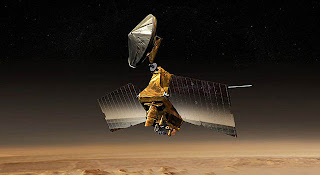The value of the compensation package granted to Microsoft Corp. CEO Steve Ballmer fell about 6 percent in fiscal 2009, a year in which weak computer sales cut into the software maker's profits. Ballmer received a pay package valued at $1.28 million for the year that ended in June, according to an Associated Press calculation of figures disclosed in a regulatory filing Tuesday.
Ballmer's salary, which is set at the beginning of the year, increased by 4 percent to $665,833. The CEO's bonus was cut by 14 percent to $600,000 from $700,000 in 2008, according to the company's annual proxy statement filed with the Securities and Exchange Commission. According to the filing, the company's compensation committee evaluates Ballmer's performance in the fiscal year, looks at what other Microsoft executives will be paid and "exercises its judgment" in recommending his bonus. Ballmer could have received up to 200 percent of his base salary, or about $1.3 million.
The balance of Ballmer's pay came in the form of $7,350 in company matches to his retirement savings account and $3,444 in imputed income from life insurance, disability insurance and athletic club membership, or payments in place of an athletic club membership.
Ballmer did not receive stock or stock options in 2009. He currently holds 4.6 percent of Microsoft's shares. Bill Gates, Microsoft's founder and current board chairman, owns 8 percent of the company's stock.
Microsoft's fiscal year ended on a down note in June as the economic crisis continued to hammer technology sales. The Redmond, Wash.-based company's revenue fell 3 percent from 2008, the first such decline since Microsoft went public in 1986. Earnings sank to $14.6 billion from $17.7 billion in 2008.
Microsoft's biggest businesses, Windows and Office, are tied to the health of the PC industry. Since the economic meltdown, consumers and businesses have both cut back on buying computers. The last three months of 2008 marked the PC industry's worst holiday season in six years. For 2009, market research firms IDC and Gartner have both predicted a year-over-year decline in PC shipments, which would be the first such drop since 2001.
The company said that as a whole, executive officers' incentive compensation was 29 percent lower than in 2008. The company said it would not give Ballmer or other executive officers merit-based salary increases in fiscal 2010.
Microsoft reported Ballmer's higher salary, but not his bonus cut, in a draft filing with the SEC on Sept. 19. The company had also previously announced that shareholders will have a chance to vote on a "say-on-pay" measure proposed by the board at its annual meeting on Nov. 19. The proposal would give shareholders a chance to weigh in, in a nonbinding fashion, every three years on executive compensation.
The board is also proposing changes to company bylaws that would give groups of shareholders representing 25 percent or more of outstanding shares the right to call special shareholder meetings — a right Microsoft said in the SEC filing is "increasingly considered an important aspect of good corporate governance."
Shareholders also will have the opportunity to vote on two proposals from their peers. One, from the AFL-CIO Reserve Fund, asks Microsoft to adopt principles for health care that include support for universal, continuous, affordable coverage for individuals and families.
The second, from a shareholder in Ohio, suggests Microsoft list recipients of company charitable gifts over $5,000 on the company's Web site.
 Researchers at security firm Finjan have discovered details of a new type of banking Trojan horse that doesn't just steal your bank log in credentials but actually steals money from your account while you are logged in and displays a fake balance.
Researchers at security firm Finjan have discovered details of a new type of banking Trojan horse that doesn't just steal your bank log in credentials but actually steals money from your account while you are logged in and displays a fake balance.









